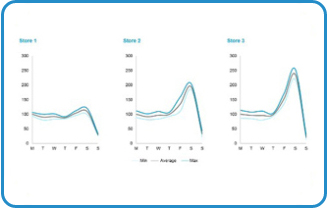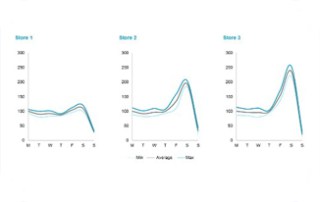An example of our work in Operations

Service Operations: how to solve the “effectiveness vs efficiency” trade-off?
An example of our work done in Operations
In front of a customer, all companies – in whatever competitive landscape – would like to be as “caring” as possible (Effective), but at the same time also as “lean” as possible (Efficient). The two behavior, of course, conflict. The following example – taken from our direct experience with a key client of ours – very well illustrates how powerful answering this trade-off can be. And the huge value we generated for them.
To do this, we applied our proven methodology that tackles the Service Operation topic in an extremely effective way, and which is built on the following 4 steps:
- Definition of best process and working hour needs per activity
- Management of activities time constraints
- Management of variability
- Annual planning and monthly/weekly/daily scheduling.
One of the things that companies usually are not able to do properly is to handle complexity. And complexity, in Service Operations, can become an incredible challenge. If not handled properly, complexity severely misleads companies, which with their interventions worsen heavily the “Effectiveness-Efficiency” trade-off instead of improving it.
For example, our client (a leading store chain) was able to consider weekly variabilities of activities average across their store network, but not the specific weekly variability of each of the stores (which are significantly different, see the graphs below). This was leading to huge “wastes” of working hours in some stores (costs in excess), while at the same time huge working hours “holes” in some others (sales missing).
Another example of complexity is found in the fact that service activities have very different “natures”. And, consequently, very different importances for the customer as well as in the sales-cost equation. For example, the graphs below show the pattern (weighted in working hours) of the different activities of our client with respect to the following criteria:
- Dependence on sales
- Simultaneousness to sale action
- Daily constraints.
It also appears how different the patterns are depending on the type of sale process (e.g., served vs self-service products).
Once all the determinants of “needs” have been addressed, it becomes crucial to find the best “supply” for each specific situation. And the best “supply” depends on other factors, such as, for example, the cost per working hour in the different situations (e.g. monthly, weekly, daily,…), which depends not only on the company business, but also on other external factors, such as for example labor legislation.
The below graphs show for examples two potential optimization approaches, that are hugely different in their use of “ordinary” vs “extra-ordinary” working hours.
Just to give an example of how impactful how work on the topic can be, it is to be noted that for the above client of ours, by combining together all the pieces of analysis that we performed and leveraging our methodology we were able to reshape completely their Service Operations, increasing by 20% their productivity.





